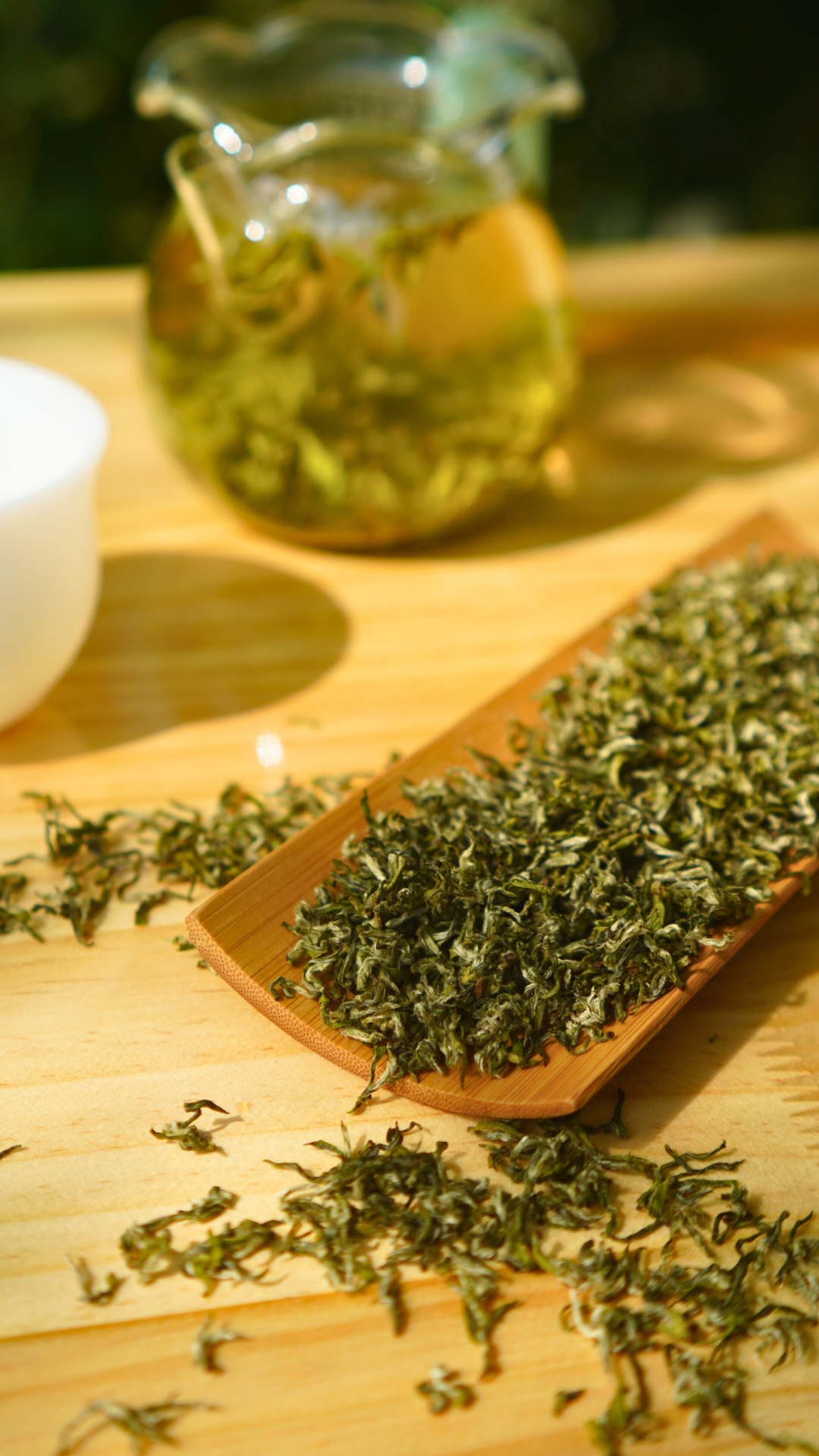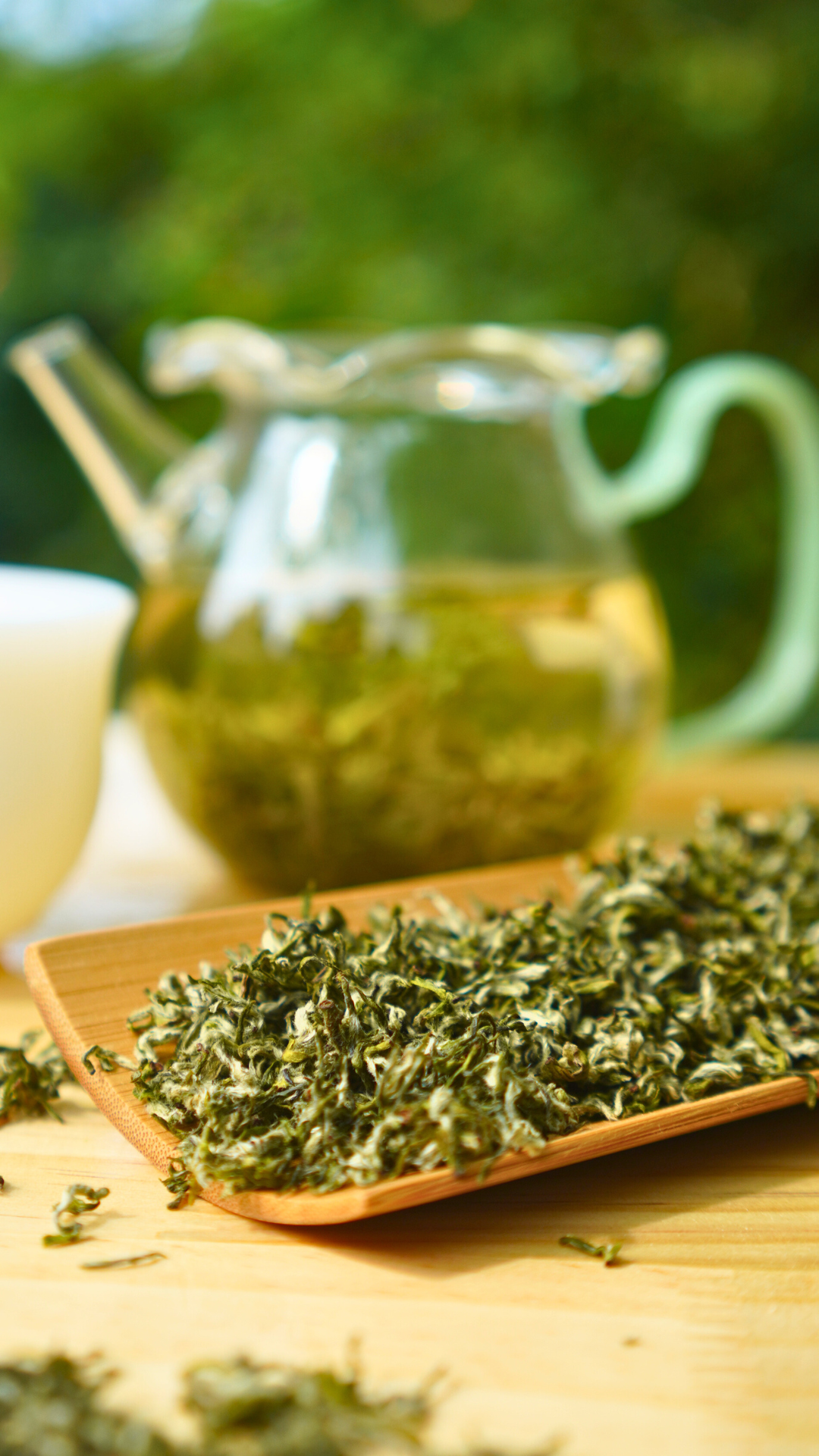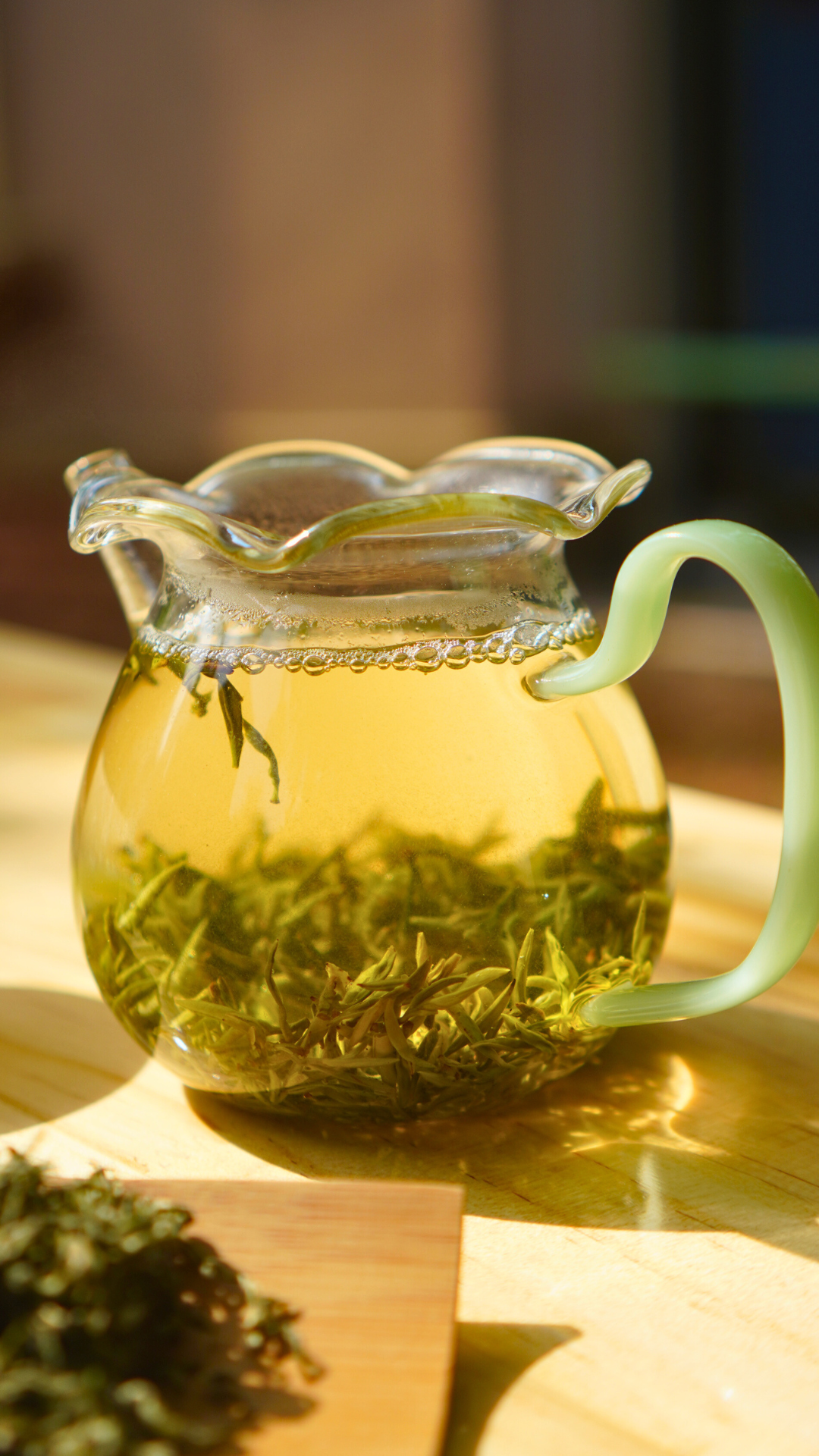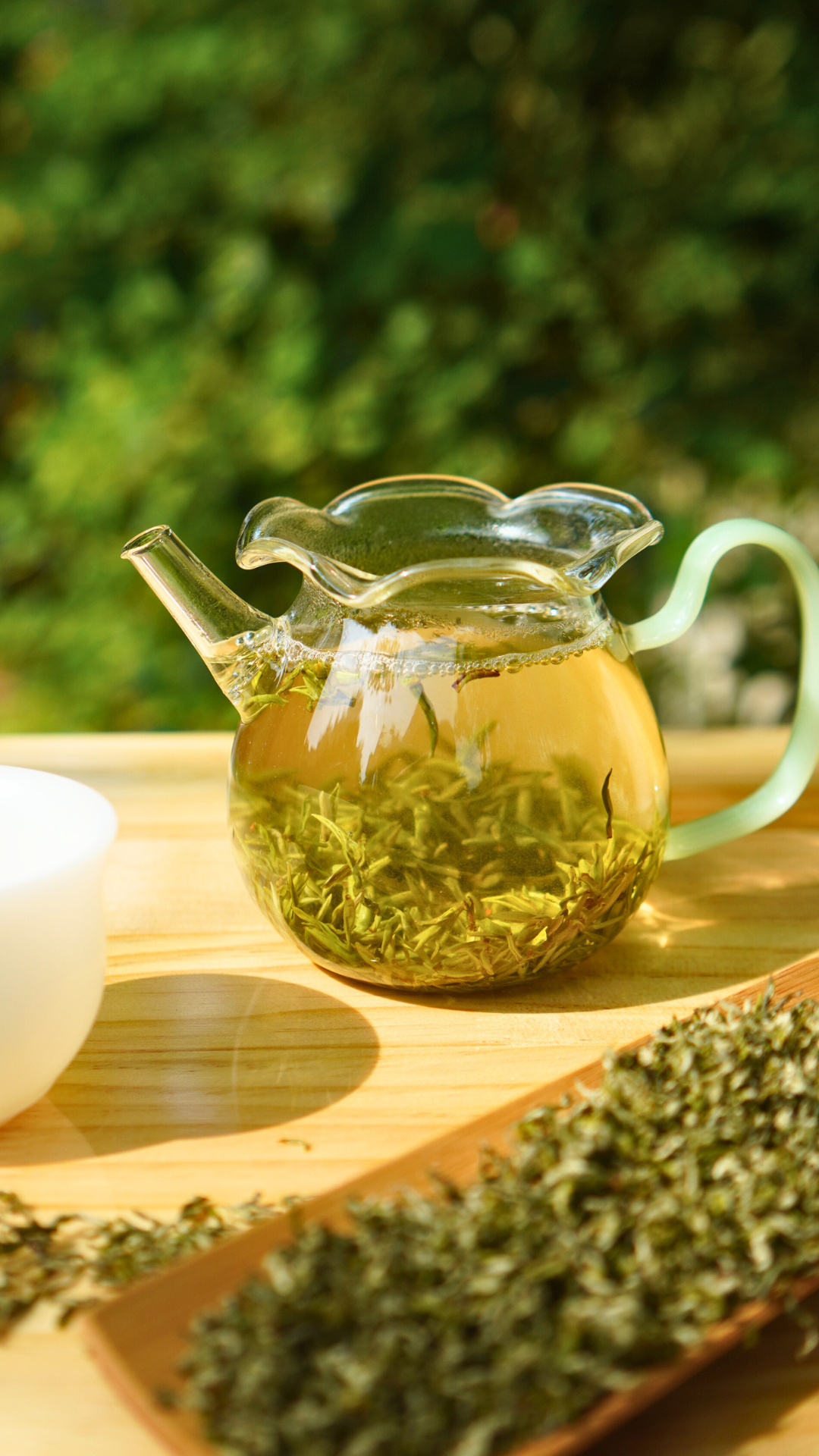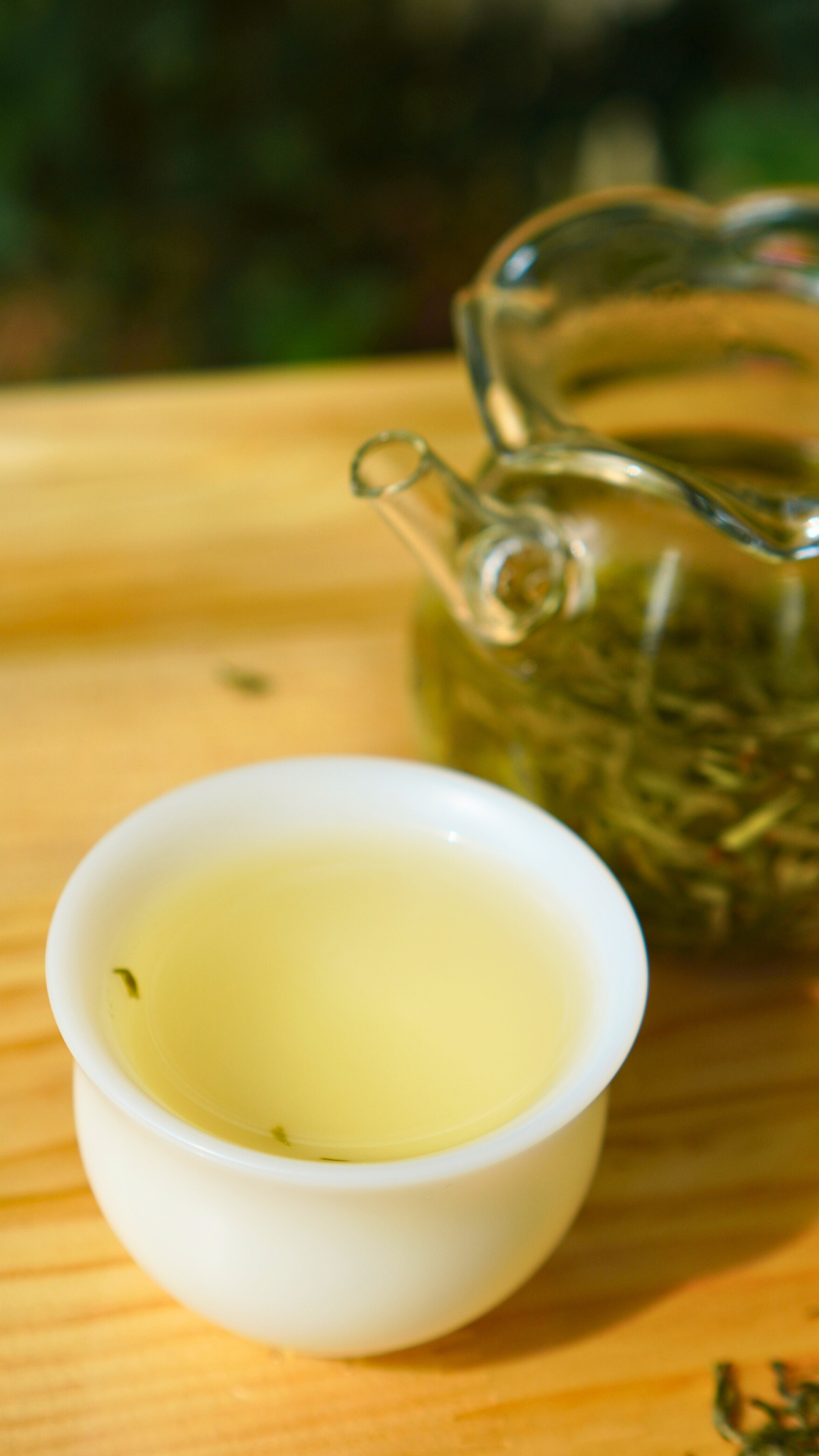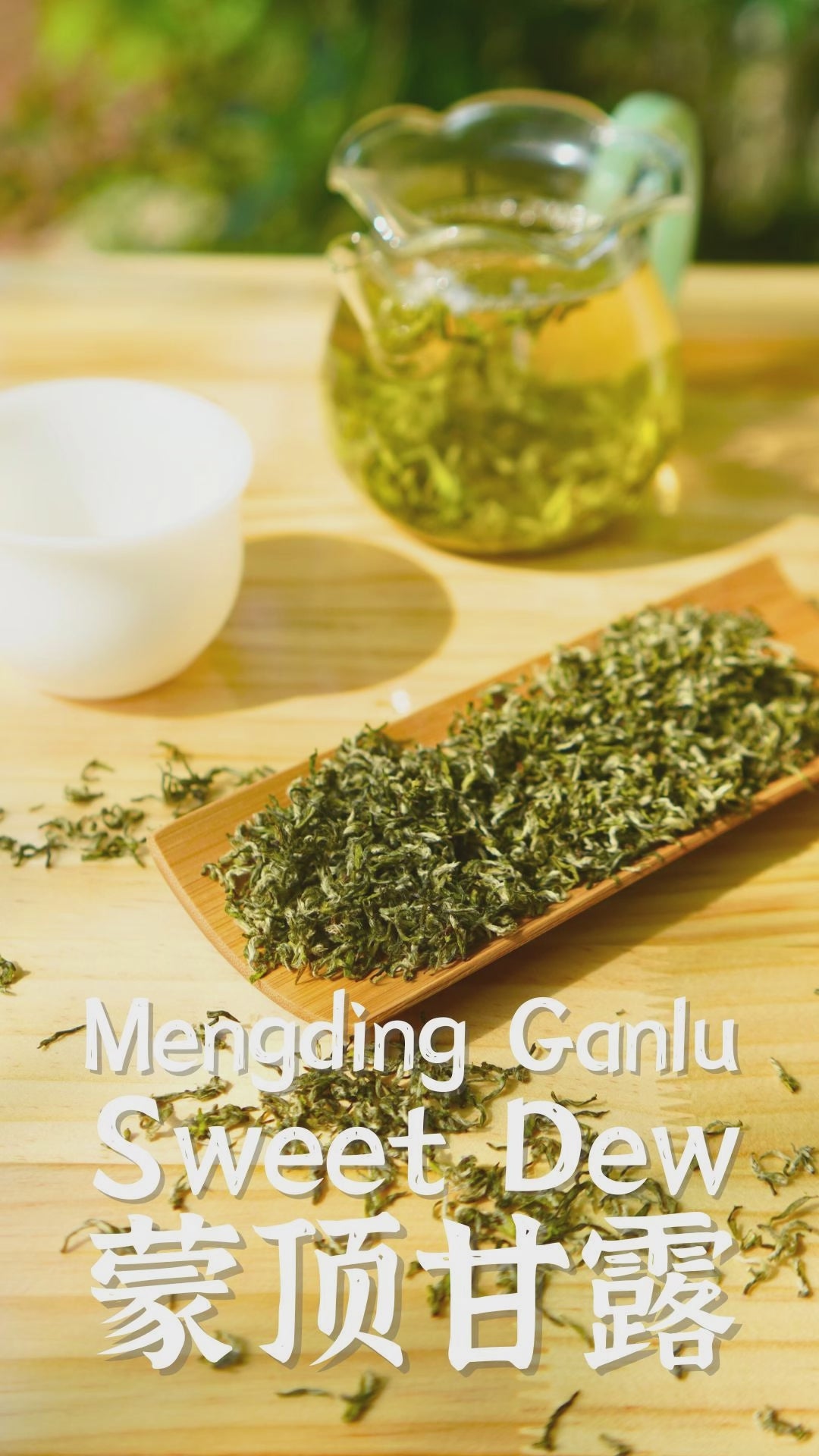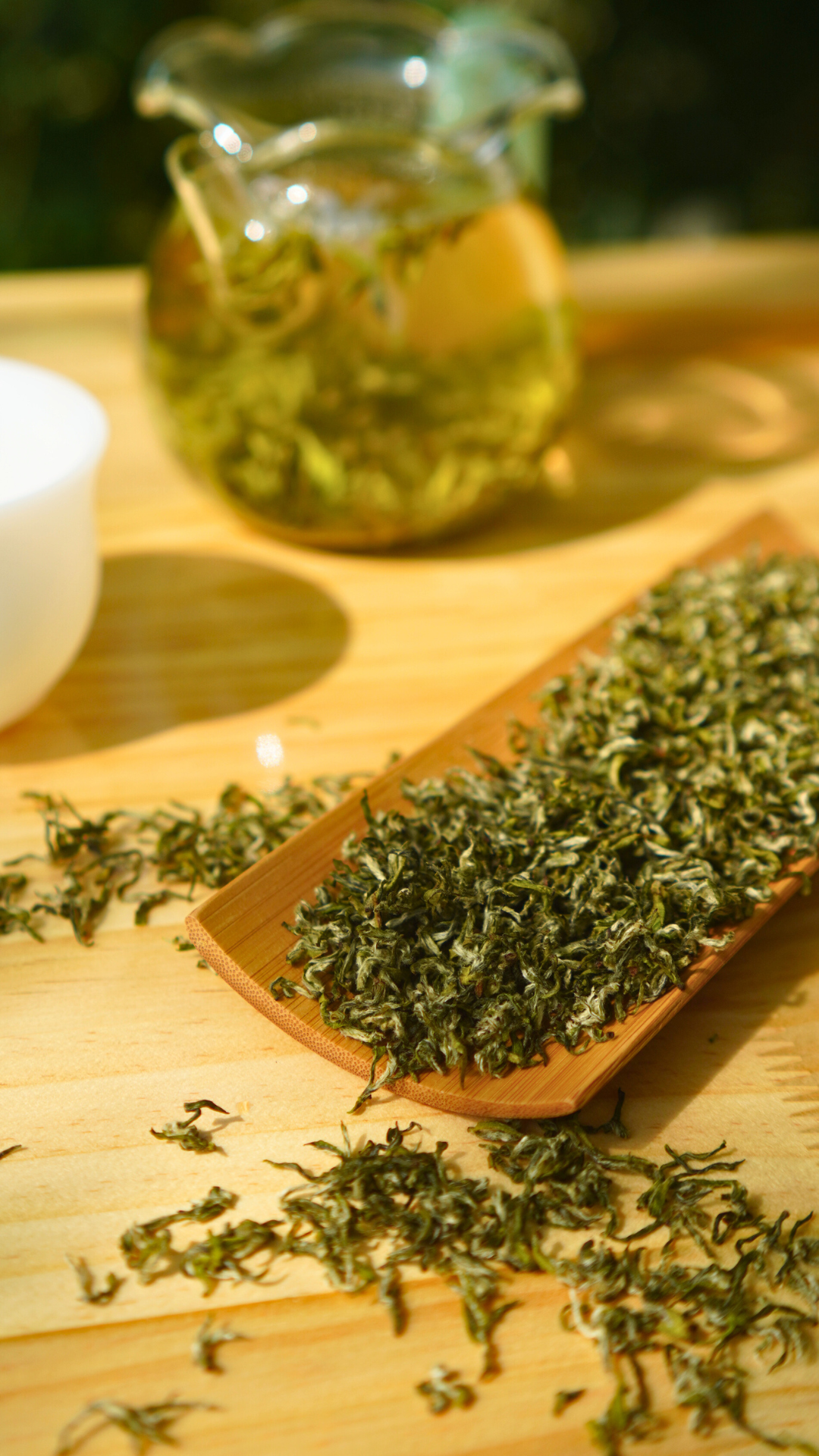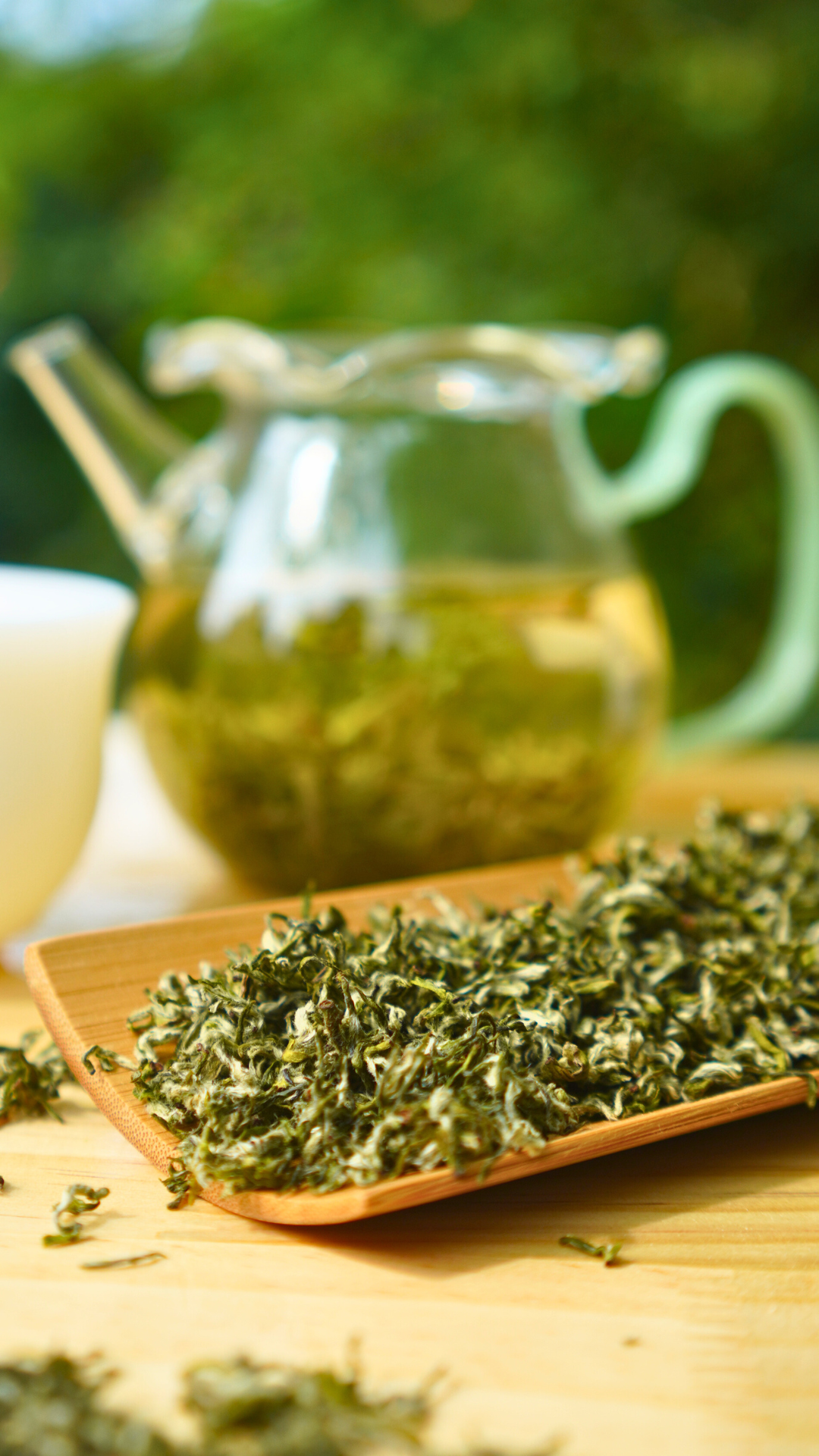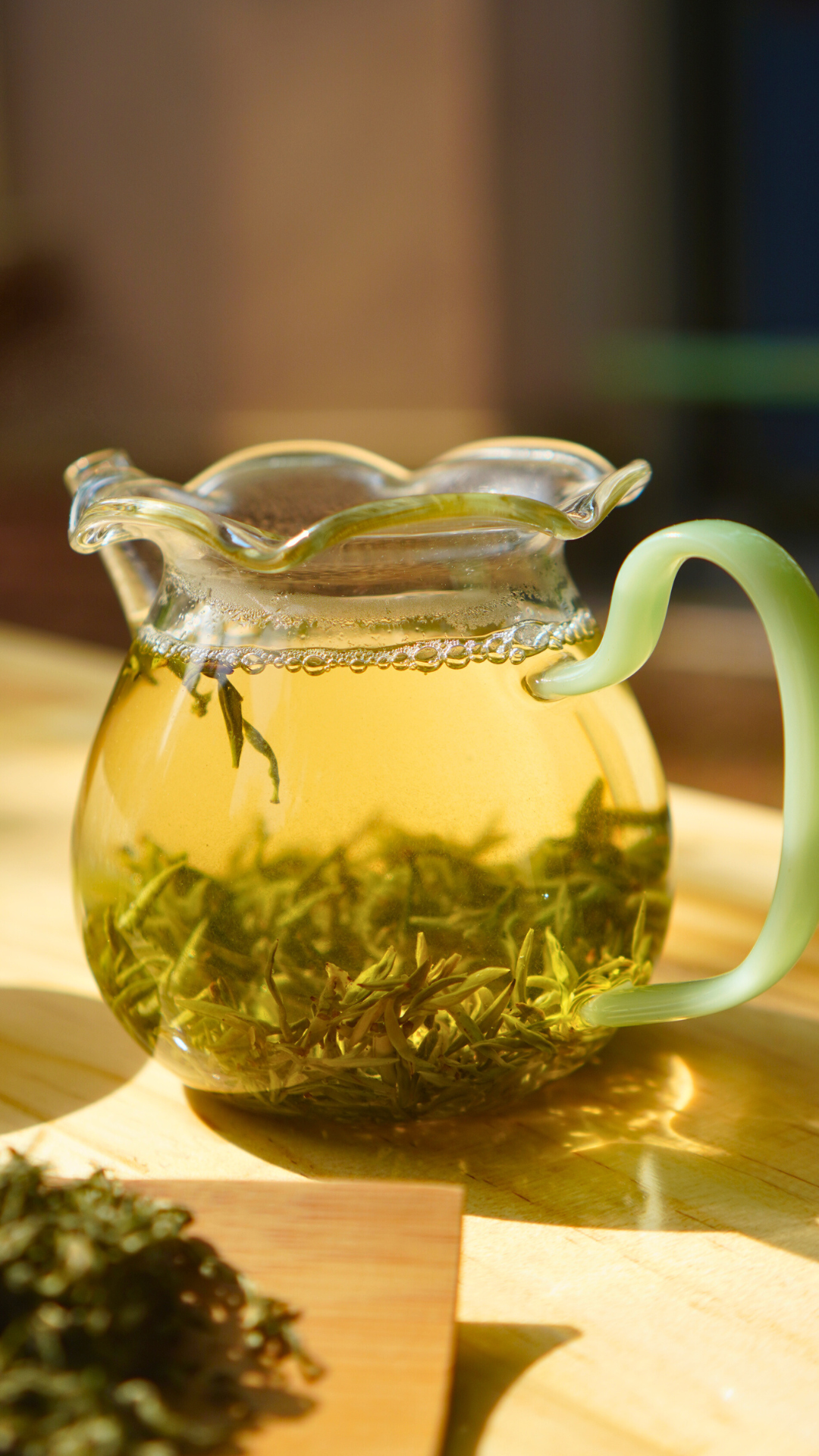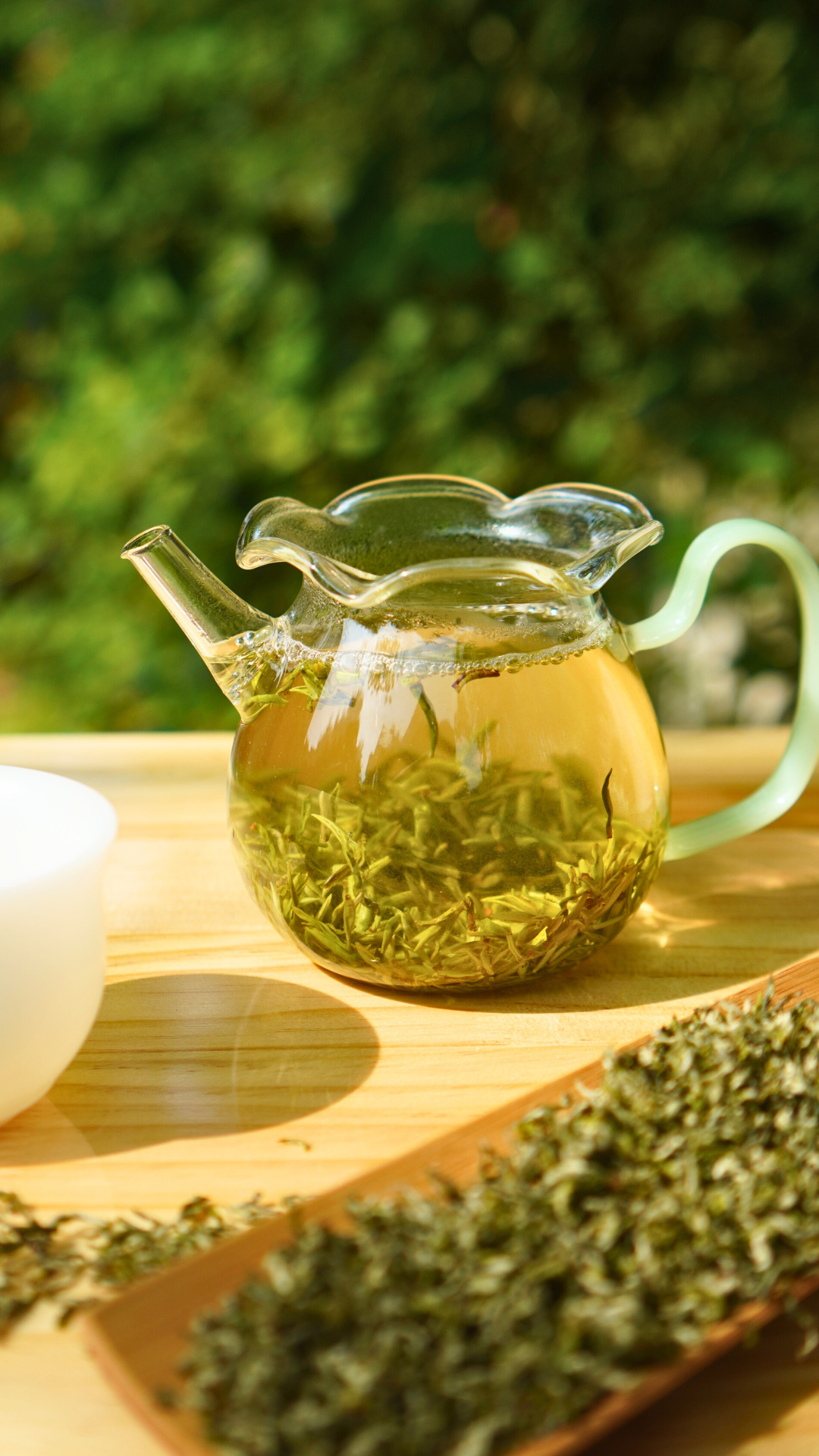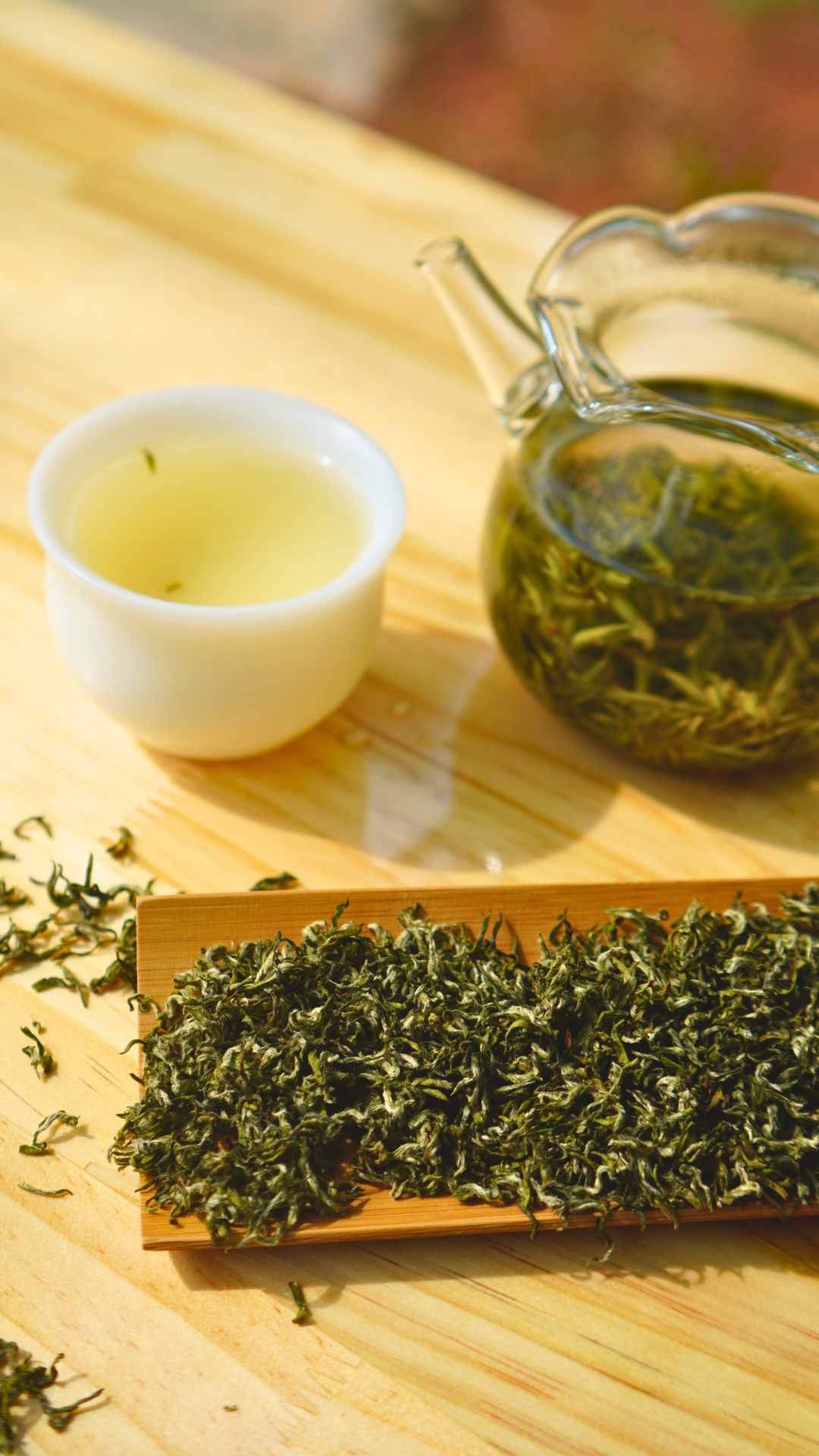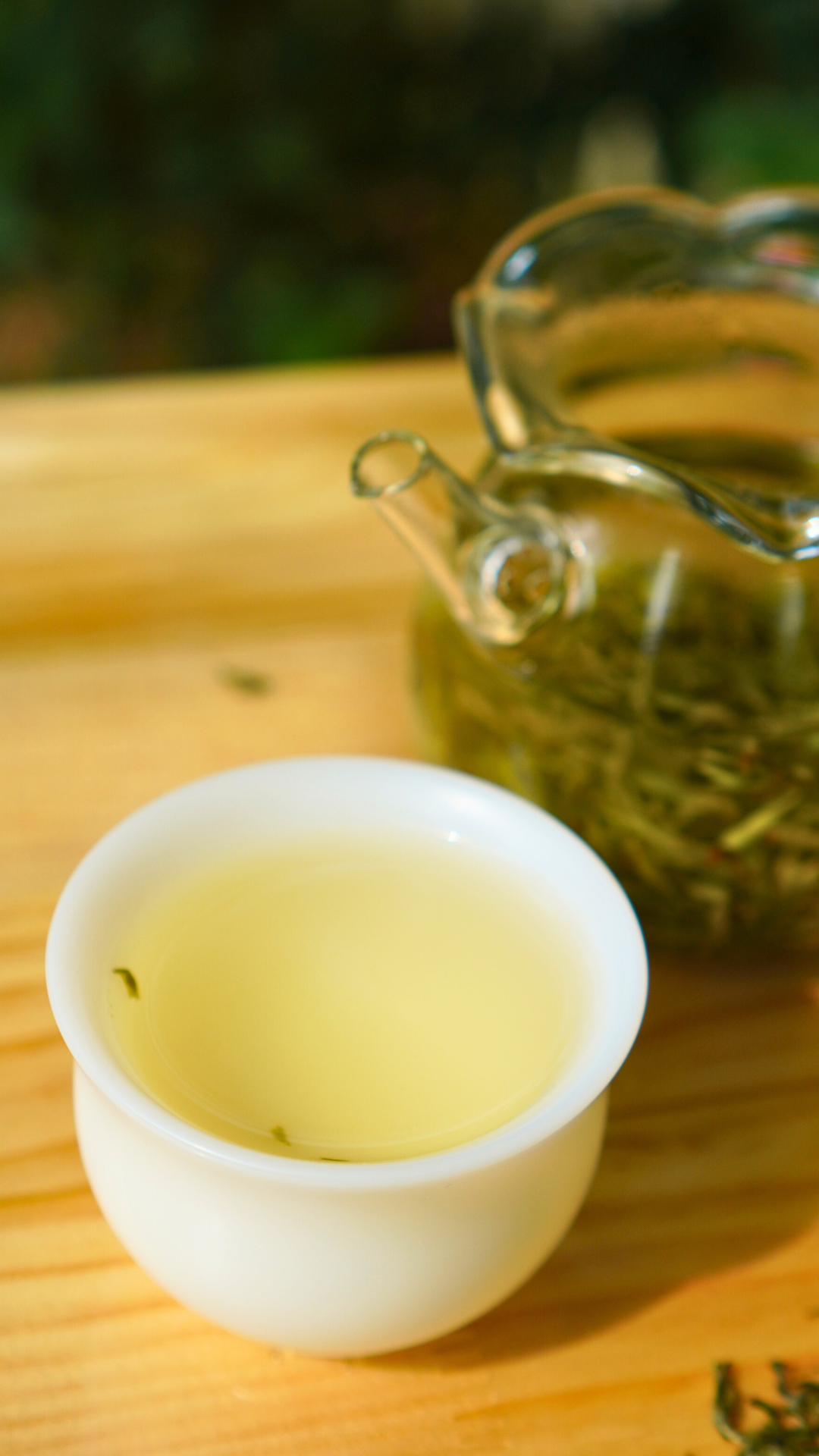Mengding Ganlu-Sweet Dew
Mengding Ganlu-Sweet Dew
明前头采蒙顶甘露
Mengding Ganlu, or "Sweet Dew of Mengding," is a distinguished Chinese green tea hailing from the misty slopes of Mengding Mountain in Ya'an, Sichuan Province. Renowned for its delicate flavor and historical significance, it is considered one of China's top ten famous teas.
Mengding Mountain, situated at approximately 1,300 meters above sea level, is enveloped in mist and receives abundant rainfall throughout the year. This unique high-altitude environment fosters slow growth of tea trees, resulting in leaves rich in essential compounds.
Harvested before the Qingming Festival in early spring, Mengding Ganlu is picked after the tea trees have accumulated nutrients during winter dormancy. The tender buds, displaying a pale green hue, are meticulously selected—requiring tens of thousands of buds to produce just one pound of this premium tea.
The traditional "three-fry three-roll" method, dating back to the Ming Dynasty, is employed in its processing. This involves 14 manual steps, including pan-frying and hand-rolling, to achieve the tea's signature curled shape and to preserve its delicate flavors and aromas.
The dry leaves of Mengding Ganlu are tightly curled, resembling tiny snails, and are covered with fine white hairs, indicating their tenderness. They emit a rich orchid fragrance that is both refreshing and enduring.
Upon brewing, Mengding Ganlu yields a clear, bright liquor with a pale yellow-green hue. The aroma is a harmonious blend of floral and bean notes, evoking the freshness of a spring garden. The taste is brisk and mellow, with a sweet aftertaste that lingers, offering a unique mountain charm and a cooling sensation.
Mengding Ganlu is not merely a tea; it is a testament to centuries of Chinese tea culture and craftsmanship. Savoring this tea is akin to experiencing the essence of spring captured in a cup.
Picking and Processing
Picking and Processing
Harvested before the Qingming Festival in early spring, Mengding Ganlu is picked after the tea trees have accumulated nutrients during winter dormancy. The tender buds, displaying a pale green hue, are meticulously selected—requiring tens of thousands of buds to produce just one pound of this premium tea.
The traditional "three-fry three-roll" method, dating back to the Ming Dynasty, is employed in its processing. This involves 14 manual steps, including pan-frying and hand-rolling, to achieve the tea's signature curled shape and to preserve its delicate flavors and aromas.
Brewing
Brewing
Teaware: Use a glass cup, glass teapot, or thin porcelain gaiwan to showcase the tea's appearance and color.
Water Temperature: 85–90°C (185–194°F).
Tea-to-Water Ratio: 3 grams of tea per 150 ml of water.
Brewing Method: Employ the "downward casting" technique—first pour water into the vessel, then add the tea leaves. Steep for 5 seconds on the first infusion, 10 seconds on the second, and increase by 5 seconds for subsequent infusions. The tea can be steeped 4–5 times.
Green Tea Storage
Green Tea Storage
It's recommended to store about 50g of green tea in sealed bags in a cool, dark cabinet or drawer for daily use. If room temperature is high, refrigerate at 0-5°C. Store remaining tea sealed in the freezer. This way, green tea can maintain its flavor for up to 2 years.
First, high temperature is the biggest concern in storage. For tea leaves, especially green tea, temperature is the most crucial factor to monitor. This is mainly because high temperatures accelerate the degradation of chlorophyll in green tea, continuously converting it into pheophytin, causing the color to turn dark brown. Research shows that for every 10°C increase in temperature, the rate of browning accelerates 3-5 times, and tea leaves easily become stale. Additionally, high temperatures intensify the auto-oxidation of tea polyphenols, dramatically reducing their content and thereby decreasing the tea's value.
Second, light exposure is another factor to avoid when storing green tea. Especially during summer and autumn when light is much stronger than in other seasons, improper storage can cause plant pigments and lipids in green tea to undergo chemical reactions, producing various off-flavors and resulting in a sun-damaged taste.
Third, foreign odors must be avoided. Particularly in summer and autumn when temperatures are generally higher, items tend to emit strong odors during storage, and green tea easily absorbs these odors, leading to deterioration. Therefore, isolation from foreign odors is essential during storage.
Finally, oxygen is the root cause of off-flavors in almost all stored items. This is because oxygen can catalyze or play a crucial role in many chemical reactions. Tea polyphenols in green tea are strong antioxidants, making them highly susceptible to oxidation. After oxidation, the brewed tea turns deep yellow and loses its fresh green tea aroma.
Common Storage Methods for Green Tea
1. Plastic Bag and Aluminum Foil Storage Method: Choose food-grade plastic bags with seals, preferably those with high density and good material quality. Avoid using scented or recycled plastic bags. After placing tea in the bag, squeeze out as much air as possible. Using a second plastic bag in reverse direction is even better. Clear plastic bags should avoid sunlight exposure. Aluminum foil bags work on similar principles. Additionally, divide purchased tea into separate sealed bags, store them in the refrigerator, and brew in batches to minimize air exposure after opening, thus slowing quality deterioration.
2. Metal Container Storage Method: Choose iron, stainless steel, or dense tin containers. For new containers or those previously used for other items with residual odors, place some tea powder inside, close the lid, shake in all directions to wipe the inner walls, then discard to remove odors. Double-lidded stainless steel tea containers available in the market are convenient and practical. Using clean, odorless plastic bags inside metal containers with tape-sealed lids is even better. Metal containers with tea should be kept in cool, shaded places away from direct sunlight, odors, moisture, and heat sources. This prevents rust and slows tea aging and deterioration. Tin containers are particularly effective at preventing moisture, oxidation, light exposure, and odor absorption.
3. Low-Temperature Storage Method: Maintain tea storage environment below 5°C using refrigeration or freezer storage. Note that for storage periods under six months, refrigeration at 0-5°C is most economical and effective; for periods over six months, freezer storage (-10 to -18°C) is better. Tea should be properly packaged and completely sealed to prevent odor absorption. When purchasing large quantities, divide into small packages (containers) before refrigeration/freezing, and remove only the amount needed for brewing. Avoid repeatedly freezing and thawing the same package.
- Loose Green Tea
- 500g/pouch
- Free Shipping
Couldn't load pickup availability
